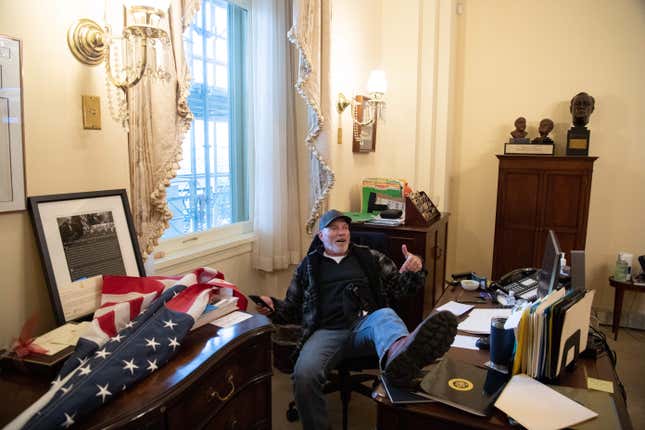
Image: Saul Loeb
“Where are you, Nancy? We’re looking for you,” says a voice belonging to one of the January 6 Capitol insurrectionists. “Nancy. Ohhh Nancy,” he continues in a singsong voice as he walks down a hallway. The video, included in house manager Stacey Plaskett’s Wednesday presentation during Trump’s second impeachment trial, was part of a larger narrative outlining how insurrectionists actively targeted members of Congress, particularly Nancy Pelosi. Photographs of Richard Barnett, one leg stretched out on Pelosi’s desk in a gesture of performative ownership, are already familiar as part of the insurrection’s iconography but, as Plaskett made clear, Barnett’s behavior was representative of a rooted violence animated by misogyny.
-

-

-

-

-

-

-

-

-

-

-

-

-

-

-

-

-

-

-

-

-

-

-

-

-

-

-

-

-

-

-

-

-

-

-

-

-

-

-

-








































